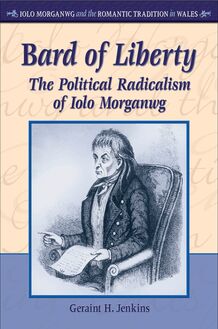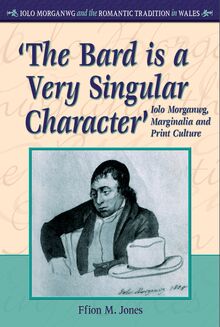-
 Univers
Univers
-
 Ebooks
Ebooks
-
 Livres audio
Livres audio
-
 Presse
Presse
-
 Podcasts
Podcasts
-
 BD
BD
-
 Documents
Documents
-
- Cours
- Révisions
- Ressources pédagogiques
- Sciences de l’éducation
- Manuels scolaires
- Langues
- Travaux de classe
- Annales de BEP
- Etudes supérieures
- Maternelle et primaire
- Fiches de lecture
- Orientation scolaire
- Méthodologie
- Corrigés de devoir
- Annales d’examens et concours
- Annales du bac
- Annales du brevet
- Rapports de stage
La lecture à portée de main
Vous pourrez modifier la taille du texte de cet ouvrage
Découvre YouScribe en t'inscrivant gratuitement
Je m'inscrisDécouvre YouScribe en t'inscrivant gratuitement
Je m'inscrisEn savoir plus
Vous pourrez modifier la taille du texte de cet ouvrage
En savoir plus

Description
Sujets
Informations
| Publié par | University of Wales Press |
| Date de parution | 14 juin 2010 |
| Nombre de lectures | 0 |
| EAN13 | 9781783164073 |
| Langue | English |
Informations légales : prix de location à la page 0,0500€. Cette information est donnée uniquement à titre indicatif conformément à la législation en vigueur.
Extrait
IOLO MORGANWG AND THE ROMANTIC TRADITION IN WALES
General Editor: Geraint H. Jenkins
The memorial plaque to Iolo Morganwg and his son Taliesin in Flemingston Church
‘The Bard is a Very Singular Character’
Iolo Morganwg, Marginalia and Print Culture
FFION MAIR JONES
© Ffion Mair Jones, 2010
All rights reserved. No part of this book may be reproduced, stored in a retrieval system, or transmitted in any form or by any means, electronic, mechanical, photocopying, recording or otherwise, without clearance from the University of Wales Press, 10 Columbus Walk, Brigantine Place, Cardiff, CF10 4UP.
www.uwp.co.uk
British Library Cataloguing-in-Publication Data A catalogue record for this book is available from the British Library.
ISBN 978-0-7083-2195-9 e-ISBN 978-1-78316-407-3
The right of Ffion Mair Jones to be identified as the author of this work has been asserted by her in accordance with sections 77 and 79 of the Copyright, Designs and Patents Act 1988.
Cover illustration: Iolo Morganwg by William Owen Pughe, by kind permission of the National Library of Wales
I Heledd Haf
‘The Bard is a very singular Character’
John Walters to Owain Myfyr, 29 January 1779 (BL Add. 15024, pp. 185–6)
Other volumes already published in the series:
A Rattleskull Genius: The Many Faces of Iolo Morganwg , edited by Geraint H. Jenkins (University of Wales Press, 2005; paperback edn., 2009)
The Truth against the World: Iolo Morganwg and Romantic Forgery , by Mary-Ann Constantine (University of Wales Press, 2007)
Bardic Circles: National, Regional and Personal Identity in the Bardic Vision of Iolo Morganwg , by Cathryn A. Charnell-White (University of Wales Press, 2007)
The Correspondence of Iolo Morganwg , edited by Geraint H. Jenkins, Ffion Mair Jones and David Ceri Jones (3 volumes, University of Wales Press, 2007)
The Literary and Historical Legacy of Iolo Morganwg 1826–1926 , by Marion Löffler (University of Wales Press, 2007)
Contents
List of Figures
Preface
Acknowledgements
List of Abbreviations
1. Introduction
2. ‘Ai ovn oedd?’ (Was it fear?): Iolo Morganwg as editor
3. ‘Ddoe, heddyw, ag yn dragywydd’ (Yesterday, today, and everlastingly): Iolo Morganwg as reader
4. ‘Aneirif bapirau didrefn’ (Countless disorderly papers): Iolo Morganwg the writer
Appendices
Editorial Methods
I. Thomas Llewelyn, Historical and Critical Remarks on the British Tongue
II. Iolo Morganwg’s books
III. Taliesin ab Iolo’s books
IV. Language
Dialect
Idioms and proverbs
Grammar and morphology
Vocabulary
Terminology
V. Literature
English poetry
Translations into English
Welsh strict-metre poetry
Welsh free-metre poetry
Anecdotes
Welsh hymns
Hymns – introductory material
VI. Miscellaneous
Agriculture
Archaeology
Architecture
Geology
History
Horticulture
Names and family history
Politics
Religion
Topography
Select Bibliography
Figures Frontispiece: The memorial plaque to Iolo Morganwg and his son Taliesin in Flemingston Church Fig. 1 The arrangement of the authentic ‘Brut y Saeson’ and Iolo’s two spurious chronicles, ‘Brut Aberpergwm’ and ‘Brut Ieuan Brechfa’, The Myvyrian Archaiology of Wales (1801–7), vol. II, p. 470 Fig. 2 David Thomas, ‘Dafydd Ddu Eryri’, 1821, Oil Fig. 3 John Pinkerton, stipple engraving by Ridley, Holl and Blood, published by James Asperne, 1807 Fig. 4 The Powys Provincial Eisteddfod, September 1824, Print Fig. 5 William Owen [Pughe], A Dictionary of the Welsh Language (1803), vol. I, title-page Fig. 6 Thomas Evans, Cyfansoddiad o Hymnau (1811), title-page Figs. 7a, 7b A list in Iolo’s hand of words beginning with the prefix ‘rhag-’, NLW 21286E, no. 1036 Fig. 8 A diagram in Iolo’s hand of the ‘penllyw’, the stone set next to the corner stone, NLW 21286E, no. 1019 Fig. 9 A diagram of ancient weapons in Iolo’s hand, NLW 21282E, no. 427 Fig. 10 A diagram in Iolo’s hand showing architectural features in the Gothic style, NLW 21283E, no. 554 Fig. 11 A drawing of an unidentified house in Iolo’s hand, NLW 21286E, no. 1037 Fig. 12 A pencil sketch of a farmhouse, barn and chapel in Iolo’s hand, NLW 21284E, no. 661 Fig. 13 A pencil diagram in Iolo’s hand showing a geological structure, NLW 21283E, no. 489
Preface
This volume forms part of a seven-year project devoted to the life and work of the multifaceted Glamorgan stonemason Edward Williams, more commonly known by his bardic name of Iolo Morganwg. The project, entitled ‘Iolo Morganwg and the Romantic Tradition in Wales, 1740–1918’ and generously funded by the Arts and Humanities Research Council and the University of Wales, commenced in October 2001, when members of the research team began transcribing the extensive collection of Iolo’s correspondence held in the National Library of Wales. These manuscript letters formed the backbone of The Correspondence of Iolo Morganwg , published in three volumes in 2007. The Correspondence offers a comprehensive picture not only of Iolo Morganwg’s life and work but also of almost half a century of life in Romantic Wales. It delves into the world of literary production in this period, the overlap between manuscript culture and the emergent and ever-strengthening culture of print, and reveals Iolo’s preoccupations with matters as diverse as architecture, agriculture, geology, social justice and radical Dissent. Moreover, it traces Iolo’s steps from theVale of Glamorgan where he was born and bred, to the counties of Kent and Devon (in the 1770s), into 1790s London, to north Wales at the turn of the century, and finally back to his ‘Bardic Lodge’ at Flemingston in Glamorgan.
The Correspondence thus gives an all-encompassing view of Iolo Morganwg’s world, and has already proved invaluable to our understanding of him. It has opened the door to some of the first full-volume studies devoted to particular aspects of his work and legacy since Griffith John Williams’s ground-breaking study of Iolo’s Welsh-language forgeries, Iolo Morganwg a Chywyddau’rYchwanegiad , published in 1926. The year 2007 heralded the appearance of three such studies: The Truth against the World: Iolo Morganwg and Romantic Forgery by Mary-Ann Constantine, leader of the Iolo Morganwg project; Bardic Circles: National, Regional and Personal Identity in the BardicVision of Iolo Morganwg by Cathryn A. Charnell-White; and The Literary and Historical Legacy of Iolo Morganwg 1826– 1926 by Marion Löffler. All three studies represent cutting-edge views of Iolo’s work. Mary-Ann Constantine’s volume reveals the prevalence of forgery in the eighteenth and nineteenth centuries, setting Iolo’s work, both spurious and authentic, side by side with that of Thomas Chatterton and James Macpherson. Cathryn Charnell-White explores the vision of Welsh history and literature which Iolo created, and his motivations for distorting historical sources and creating his own version of narratives relating to the past. Finally, Marion Löffler examines Iolo’s posthumous reputation – how Victorian Wales elevated him to saintliness, thereby denying his legacy of the radical elements which undoubtedly formed a key part of his life and work. To complement these works, a volume of essays on Iolo Morganwg, A Rattleskull Genius: The Many Faces of Iolo Morganwg , edited by the now former director of the University of Wales Centre for Advanced Welsh and Celtic Studies and general editor of this series, Geraint H. Jenkins, was published in 2005 and reprinted in paperback in 2009.
The present study is highly indebted to all the works mentioned above. With them, it shares the burning desire to restore the reputation of Iolo Morganwg and rescue his work from oblivion. Much twentieth-century criticism of Iolo centred on the ‘trickery’ of his forgeries – on how he misled the Welsh literary and historical establishment, as well as the general public, by producing and circulating false accounts of history and spurious literary works in genres as diverse as the Welsh cywydd , the medieval prose chronicle and the aphoristic Welsh ‘triad’. Griffith John Williams’s incomplete biography Iolo Morganwg: Y Gyfrol Gyntaf , published in 1956, stood apart from the hue and cry raised against the Glamorgan bard and stonemason by John Morris-Jones and others, and began the process of reinstating Iolo in the history of his country as a highly creative literary figure – ‘one of the nation’s great men, the most gifted Welshman of his day’(‘un o wŷyr mawr y genedl, Cymro galluocaf y dydd’). For, in spite of the attention given to the fact that Iolo was a highly accomplished producer of literary forgeries, much of his work remained unexamined, and was confined to the manuscripts which he left at his death. This study deals specifically with the idea of ‘marginalization’ in relation to Iolo. It considers his marginalized and forgotten contributions to published works (chapter 2), his sometimes idiosyncratic but always highly revealing annotations to printed books and manuscripts (chapter 3), and, finally, his hoard of ‘scrap’ material which was left in the margins of his collection of correspondence (chapter 4). The Appendices provided at the end of the volume further ensure the restorative nature of this study by offering a selection of Iolo’s marginalia to his correspondence and an example of one of his most interesting and profusely annotated copies of printed books.
Besides my debt to the above-mentioned publications by Geraint H. Jenkins, Mary-Ann Constantine, Cathryn A. Charnell-White and Marion Löffler, I am greatly indebted to them in person for their support over the years since the inception of the project. I also wish to thank former project members David Ceri Jones, Eluned Jones, Andrew Davies and Hywel Gethin Rhys. I have been particularly fortunate in securing the guidance of Geraint H. Jenkins and Mary-Ann Constantine in drafting and refining the following chapters, and of Glenys Howells in copy-editing the material. My thanks also g
-
 Univers
Univers
-
 Ebooks
Ebooks
-
 Livres audio
Livres audio
-
 Presse
Presse
-
 Podcasts
Podcasts
-
 BD
BD
-
 Documents
Documents
-
Jeunesse
-
Littérature
-
Ressources professionnelles
-
Santé et bien-être
-
Savoirs
-
Education
-
Loisirs et hobbies
-
Art, musique et cinéma
-
Actualité et débat de société
-
Jeunesse
-
Littérature
-
Ressources professionnelles
-
Santé et bien-être
-
Savoirs
-
Education
-
Loisirs et hobbies
-
Art, musique et cinéma
-
Actualité et débat de société
-
Actualités
-
Lifestyle
-
Presse jeunesse
-
Presse professionnelle
-
Pratique
-
Presse sportive
-
Presse internationale
-
Culture & Médias
-
Action et Aventures
-
Science-fiction et Fantasy
-
Société
-
Jeunesse
-
Littérature
-
Ressources professionnelles
-
Santé et bien-être
-
Savoirs
-
Education
-
Loisirs et hobbies
-
Art, musique et cinéma
-
Actualité et débat de société
- Cours
- Révisions
- Ressources pédagogiques
- Sciences de l’éducation
- Manuels scolaires
- Langues
- Travaux de classe
- Annales de BEP
- Etudes supérieures
- Maternelle et primaire
- Fiches de lecture
- Orientation scolaire
- Méthodologie
- Corrigés de devoir
- Annales d’examens et concours
- Annales du bac
- Annales du brevet
- Rapports de stage









